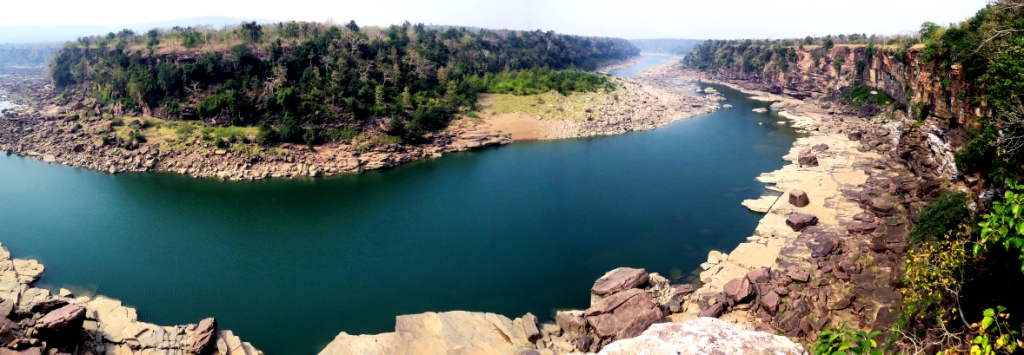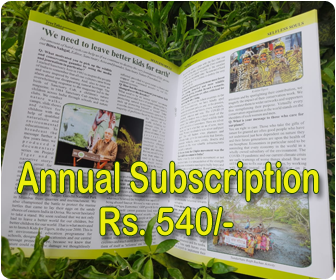Expert Expressions
Dr C.P. Rajendran is an adjunct professor at National Institute of Advanced Studies, Bengaluru, and a director of the Consortium for Sustainable Development, Connecticut, U.S
On December 25, 2024, Prime Minister Narendra Modi laid the foundation stone for the Ken-Betwa River Link Project, which aims to solve the water scarcity in the Bundelkhand region that covers parts of Uttar Pradesh and Madhya Pradesh. The project also includes the construction of a dam located within the Panna Tiger Reserve, raising concerns about its submergence. Upon completion, this project will link the supposed water surplus from Ken river with the Betwa in drought-stricken Bundelkhand — an area that had 58% forest cover in 1938.
This project, which costs around Rs 45,000 crore, was launched despite the objections raised by experts, including members of an empowered committee appointed by the Supreme Court of India, and by circumventing the law that has strict terms for allowing hydroelectric power projects. Models of grandiose technological fixes as the solution to all water-related problems have gathered and are gathering momentum. Politicians are now touting the concept of river interlinking for inter-basin water transfers as a geoengineering solution to continued water depletion in India.
The concept of inter-basin transfer was proposed 130 years ago by Sir Arthur Cotton, who designed irrigation dams in the Godavari and Krishna river valleys. M. Visvesvaraya, an early icon among Indian engineers, further refined this idea. K.L. Rao and Captain Dinshaw J Dastur subsequently expanded the scope of this concept in 1970 and 1980. Initially termed the ‘National Water Grid’, this concept re-emerged as the ‘River-Interlinking Project’ (ILR) from the Ministry of Water Resources to transfer surplus waters from the Ganga and the Brahmaputra to water-deficient regions in central and southern India. Following this, the National Water Development Agency (NWDA) was established in 1982 to conduct surveys and investigations, and to prepare feasibility reports for links under the National Perspective Plan. The NWDA identified 30 links for feasibility studies, divided into 14 Himalayan and 16 Peninsular river links. These links are anticipated to alleviate the impacts of floods and droughts, boost income in rural areas, and address water distress in agriculture.
The currently estimated cost of Rs 5.5 lakh crore does not include the social, environmental, and operational costs. Ultimately, all this will end up as taxes on the common man. This lofty idea of interlinking the rivers, to connect with the aim of linking surplus rivers of the country with the deficient rivers is fundamentally flawed as it overlooks the huge environmental costs and the eventual deaths of the rivers and deltaic regions. The uncontrolled human-induced disequilibrium in natural hydrographic systems will destroy associated ecological niches with incalculable repercussions for the long-term well-being of society — an unpardonable disservice to future generations. We may also have to factor in the consequences of climate change impacting rainfall and river flow, which will aggravate the situation. It is unclear how the nation’s declared commitment to mitigating human-induced climate change and river manipulation go hand in hand.
The eco-services of rivers
Policymakers ignore the point that there is no “free” surplus water in any river and simple elementary arithmetic rationalisations such as tapping the ‘water lost to sea’ do not consider the eco-hydrological dimensions of the issue. The supporters of these projects and the politicians do not understand or deliberately ignore viewing the river as a part of the drainage basin with constitutive ecological niches, which includes its final destination of deltaic plains, interfacing with the sea. The eco-services of the free-flowing rivers include the flushing of silt from riverbeds to the coastal waters to form deltas. Flood water is not to be rationalised as ‘surplus’. It needs to be seen as the carrier of minerals for land fertility, groundwater recharge, and sustenance of biodiversity, which finally helps the livelihood of millions of marginalised people.
By diverting river water, deltaic regions are starved of water that could have helped balance saltwater from the sea. Now, however, the deltaic ecosystem will suffer from the change. The Indus Delta offers a crucial lesson. Alice Albinia, in her book, ‘Empires of the Indus: The Story of a River’ (2008), narrates how a delta system at the mouth of the Indus — which was once “the richest in all Pakistan” — became impoverished when the British started barrage construction, which Pakistan continued after 1947. Such examples are aplenty in India as well. The state of the downstream parts of the Narmada since the completion of the Sardar Sarovar dam is a modern example in the making.
The global examples of river channelisation have also proved to be major disasters. The channelisation of River Kissimmee in the State of Florida, authorized by the U.S. Congress in 1954 to mitigate flooding, is an environmental disaster that has resulted resulting in the loss of wetlands. Massive resources are being spent to revive its original configuration. The current state of the Aral Sea — one of the world’s largest lakes — is another example of how geoengineering projects destroy natural systems. The lake has now become a howling desert after the rivers that sustained it were diverted by irrigation projects implemented during the heady days of the Soviet Union.
The real reasons for India’s water crisis
India’s water crisis is spiralling out of control, primarily due to inadequate water management, poor environmental practices, law ambiguity, and corruption. A national water policy should embrace a holistic approach to watershed management, involving local citizens in monitoring the hydrological cycle, and working alongside hydrologists, engineers, and biologists. The policy must incorporate effective aquifer management through the regulation of water usage. Farmers should be engaged to help devise strategies for efficient irrigation water usage. The government has limited control over wastewater management and should create innovative reuse programmes. A comprehensive study involving interdisciplinary expertise on river basins is essential before initiating significant water transfer projects.
In the book, Let There Be Water: Israel’s Solution for a Water-Starved World, Seth M. Siegel notes that Israel’s drip irrigation programmes save between 25%-75% of pumped water. Israel’s success story in water resource management lies in modernising irrigation techniques. This also compels farmers to use less water, fertilisers, and pesticides, maintaining aquifer health at an optimum level. Along with such interventions, we must incorporate elements of vernacular practices in watershed management strategies.
Despite the current ruling regime’s emphasis on ‘Hindutva’ and its embedded belief system that extols the deity ship of Indian rivers, the river interlinking project stands out as a stark contrast to such an ideology. Manipulated by dams that are in excess, mauled by human and industrial waste, and commodified for religious marketing, India’s rivers are under existential threat. Who will save them?










.jpg?resize=120%2C90&ssl=1)





Leave a comment